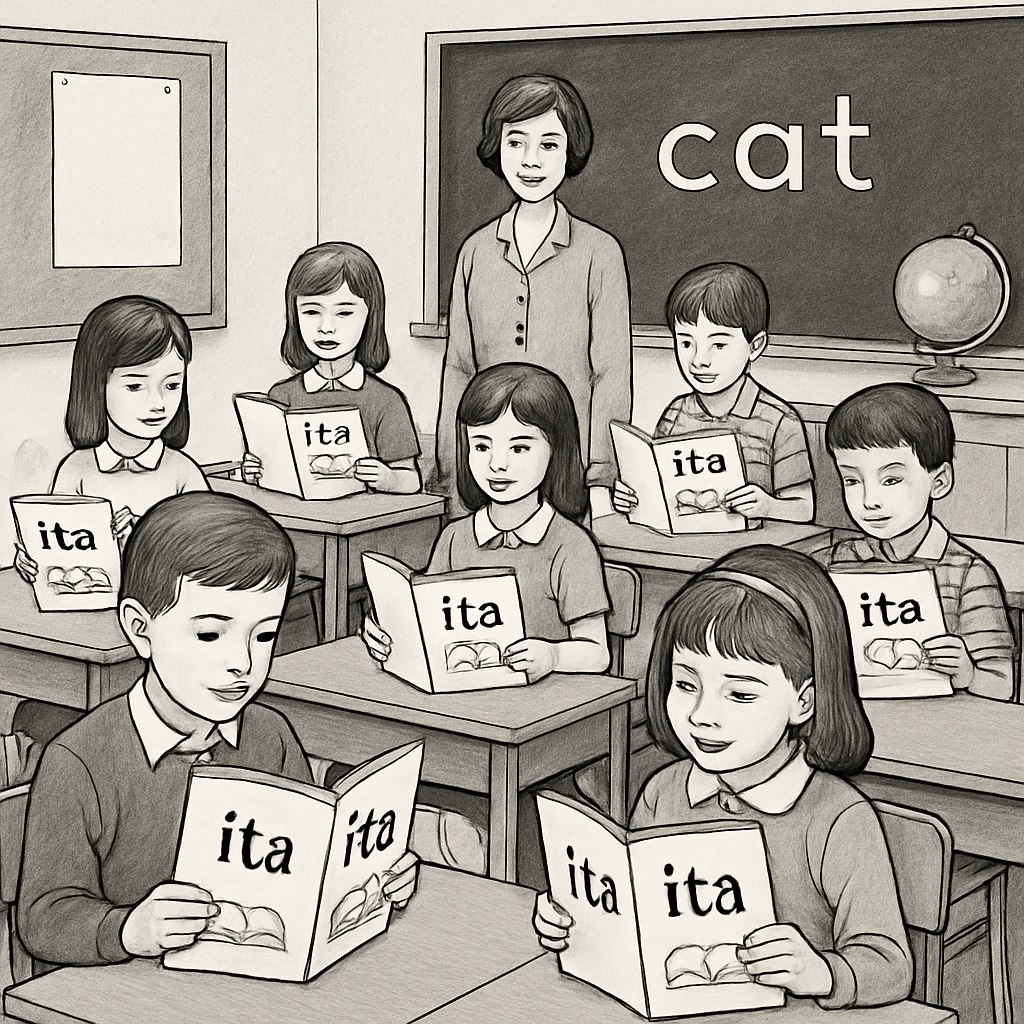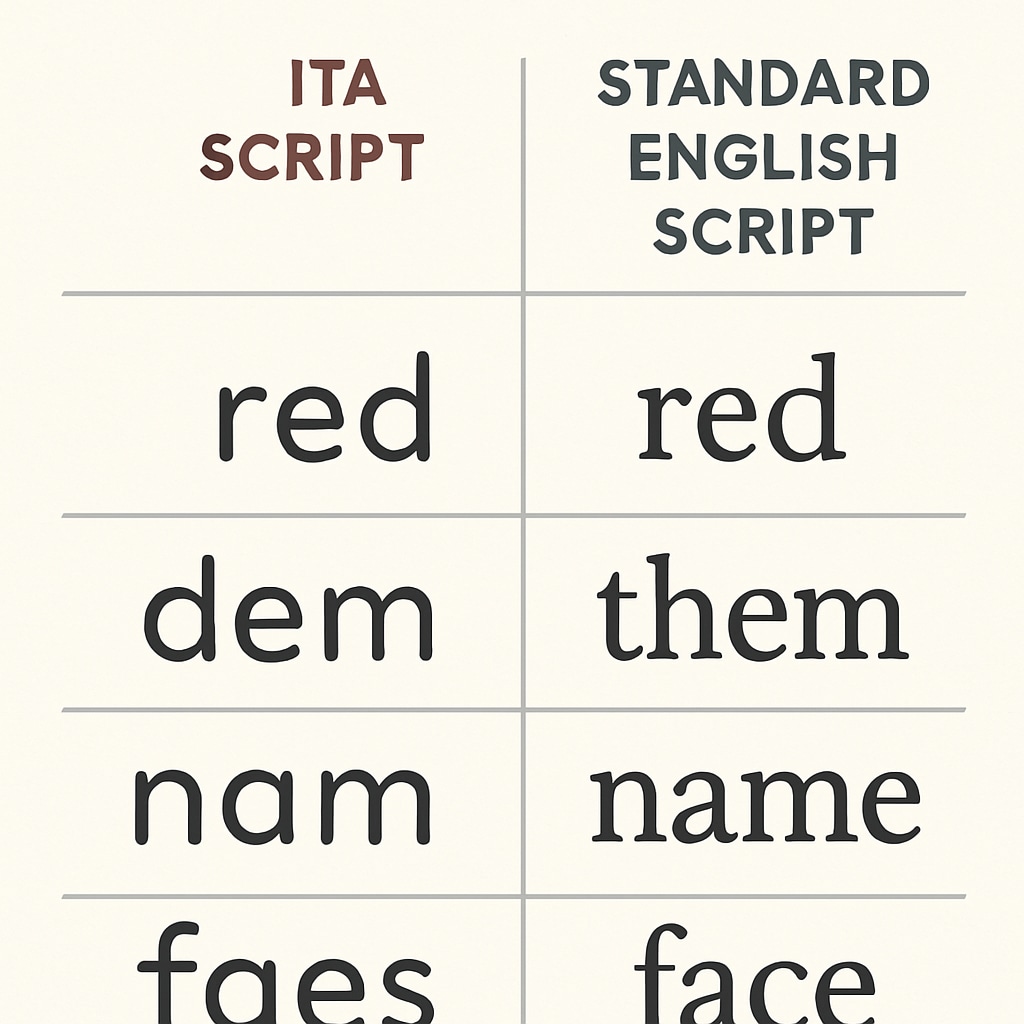The Initial Teaching Alphabet (ITA), introduced in the mid-20th century, was heralded as a revolutionary teaching method to assist early readers. By simplifying the complexities of standard English spelling, ITA aimed to offer a smoother path to literacy. However, this innovative approach may have had unintended consequences, particularly regarding long-term spelling proficiency. Was ITA a breakthrough in educational innovation, or did it inadvertently create hurdles for learners? Let’s delve into the impacts of ITA on spelling skills and its broader implications for literacy education.
The Origins and Goals of the Initial Teaching Alphabet
The Initial Teaching Alphabet was developed in the 1950s by Sir James Pitman, a British educator. Designed as a transitional alphabet, ITA replaced traditional English orthography with a simplified system of 44 phonetic characters that corresponded directly to spoken sounds. The goal was to help children decode words more easily and focus on reading fluency without the irregularities of English spelling.
Proponents of ITA argued that it provided young learners with an accessible and less frustrating entry into reading. For example, irregular spellings like “through” and “tough” were replaced with phonetic equivalents, reducing cognitive load for beginners. This method was particularly appealing in classrooms with struggling readers, as it promised rapid improvements in literacy.

Unintended Consequences: Spelling Challenges in Later Years
While ITA initially seemed to boost reading confidence, educators and researchers soon noticed a significant drawback: students transitioning from ITA to standard English spelling often struggled. This challenge arose primarily because the phonetic consistency of ITA did not align with the irregular rules of English orthography. As a result, learners were forced to unlearn ITA spellings and relearn words in their standard forms, causing confusion and frustration.
For example, a child taught to spell “know” as “no” under ITA might later face difficulties adjusting to the silent “k” in traditional English. The reliance on ITA’s simplified system inadvertently delayed their understanding of standard spelling conventions. A 1975 study published in the *Journal of Educational Psychology* noted that ITA students often displayed persistent spelling errors well into their teenage years.
ITA as a Double-Edged Sword
Despite its drawbacks, ITA was not entirely without merit. It succeeded in its primary aim of accelerating reading skills for many young learners. By reducing the initial complexity of English spelling, ITA allowed students to develop phonemic awareness (the ability to recognize and manipulate sounds in words). However, this short-term gain came at the expense of long-term adaptability. The transitional nature of ITA created a dependency on its phonetic consistency, making the switch to standard English more challenging.
Educational researchers have likened ITA to training wheels on a bicycle. While they provide initial support, over-reliance can hinder the development of the skills needed for independent mastery. This analogy highlights the delicate balance educators must strike when introducing transitional learning tools.

Lessons for Modern Literacy Education
The debate surrounding ITA offers valuable lessons for contemporary literacy education. Modern teaching methods have largely moved away from transitional systems like ITA in favor of approaches that integrate phonics with standard spelling from the outset. Programs such as systematic phonics instruction emphasize the relationship between sounds and letters while respecting the complexities of English orthography.
For educators, the key takeaway is the importance of aligning teaching methods with long-term learning goals. While it is tempting to prioritize short-term gains, strategies must also consider their impact on future skills development. The ITA experiment underscores the risks of oversimplification in education, particularly when dealing with complex systems like language.
Conclusion: A Balanced Perspective on ITA
The Initial Teaching Alphabet remains an intriguing chapter in the history of educational innovation. While it provided a creative solution to the challenges of early literacy, its long-term impact on spelling proficiency raises questions about the efficacy of transitional learning tools. Educators and policymakers must weigh the benefits of simplified systems against their potential to create barriers later in life.
Ultimately, the ITA story serves as a reminder of the importance of holistic, forward-thinking approaches to teaching. By addressing both immediate and future learning needs, we can ensure that education empowers students not just for the present, but for a lifetime of success.
Readability guidance: Short paragraphs and clear structure improve readability. External links to further reading: Initial Teaching Alphabet on Wikipedia, Initial Teaching Alphabet on Britannica.


